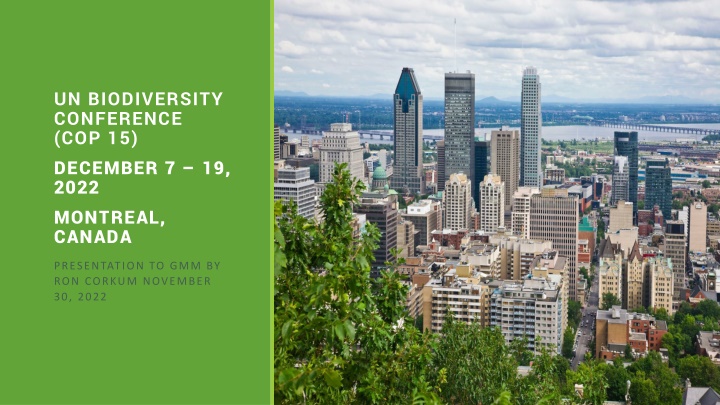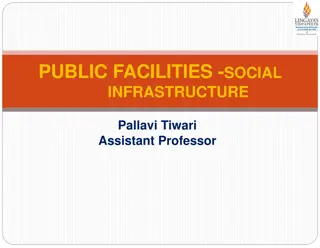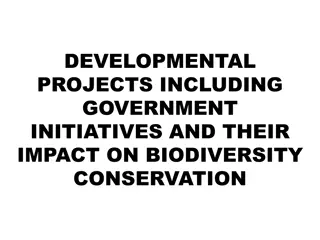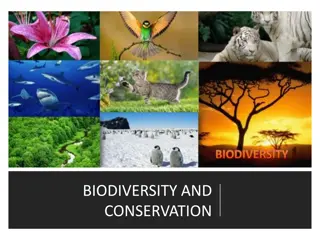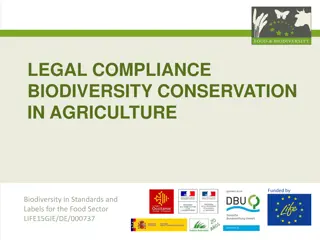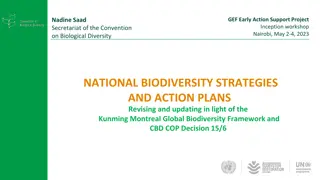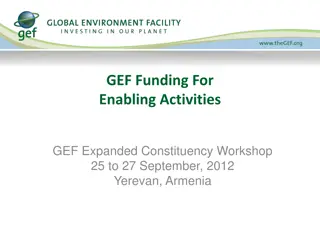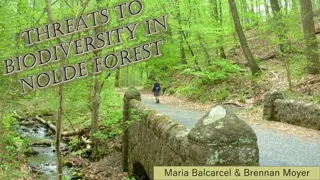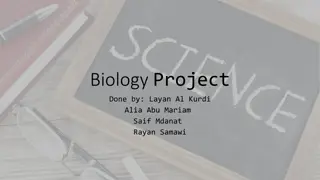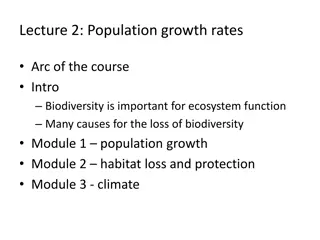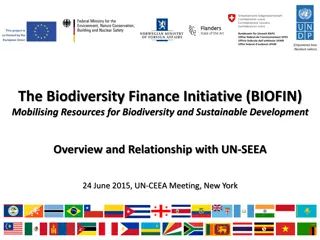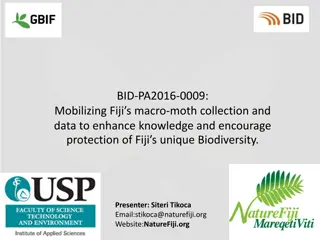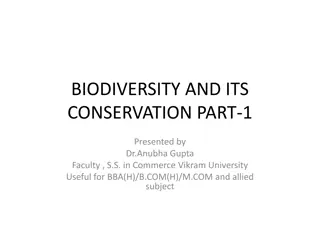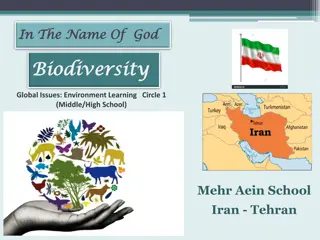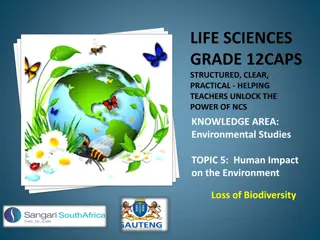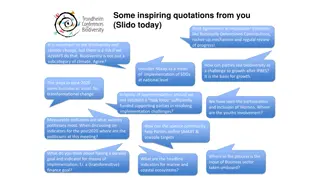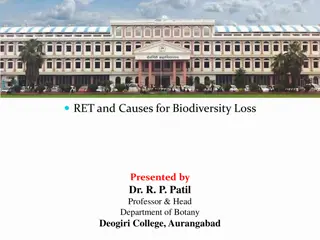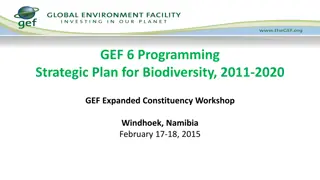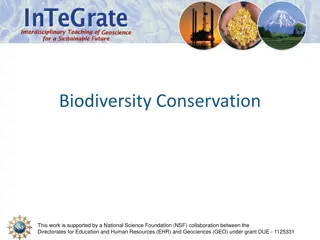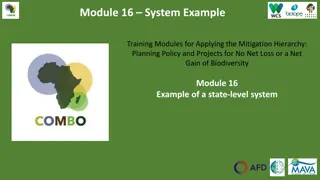UN Biodiversity Conference COP15: Conservation and Challenges
United Nations Convention on Biodiversity (CBD) is the foundation for COP conferences, aiming to conserve biological diversity and ensure the sustainable use of genetic resources. COP15 in Montreal addresses the dangerous decline in nature, linking biodiversity with climate change. With ambitions to address these challenges, COP15 faces criticism for a poor track record in meeting previous commitments.
Download Presentation

Please find below an Image/Link to download the presentation.
The content on the website is provided AS IS for your information and personal use only. It may not be sold, licensed, or shared on other websites without obtaining consent from the author.If you encounter any issues during the download, it is possible that the publisher has removed the file from their server.
You are allowed to download the files provided on this website for personal or commercial use, subject to the condition that they are used lawfully. All files are the property of their respective owners.
The content on the website is provided AS IS for your information and personal use only. It may not be sold, licensed, or shared on other websites without obtaining consent from the author.
E N D
Presentation Transcript
Confere nce (COP 15) 7U -19 Decemb er 2022 Montreal UN BIODIVERSITY CONFERENCE (COP 15) DECEMBER 7 19, 2022 MONTREAL, CANADA PRESENTATION TO GMM BY RON CORKUM NOVEMBER 30, 2022
United Nations Convention on Biodiversity (CBD) International treaty originally signed by 150 nations at the Rio Earth Summit in 1992 and is the foundation for the COP conferences Purpose: conservation of biological diversity (i.e. protect species and ecosystems) the sustainable use of its components fair and equitable sharing of the benefits arising out of the utilization of genetic resources The CBD has now been ratified by 196 nations (unfortunately does not include the United States)
Conference of the Parties (COP) COP is the governing body of the CBD. COP for the Convention on Biodiversity is not the same as COP for the United Nations Framework Convention on Climate Change (although many of the signatory governments are the same for both conventions). The Secretariat of the Convention on Biological Diversity is based in Montreal, Canada. Representatives from all parties (i.e., governments) that have ratified the treaty meet every two years at a COP conference to review progress, set priorities and commit to work plans.
Dangerous decline in nature One million of the world s estimated 8 million species of plants and animals are threatened with extinction. We are using the equivalent of 1.6 Earths to maintain our current way of life and ecosystems cannot keep up with our demands. 75 % of the Earth s land surface has been significantly altered by human actions, including 85 % of wetland areas.
Dangerous decline in nature 66 % of ocean area is impacted by human activities, including from fisheries and pollution. Close to 90% of the world s marine fish stocks are fully exploited, overexploited or depleted. Agricultural expansion is said to account for 70% of the projected loss of terrestrial biodiversity.
Why is Biodiversity Important? Climate change and biodiversity are inextricably linked Food security Clean air and water Natural resources and medicines Preventing diseases and pests Quality of life Nature has intrinsic value in its own right
COP15 has big ambitions, but a poor track record In 2002, the Parties to the Convention committed themselves to achieve by 2010 a significant reduction of the current rate of biodiversity loss. This did not happen. At COP10 in Nagoya, Japan, in 2010, governments agreed on ambitious global goals called the 20 Aichi Biodiversity Targets. None of these targets was fully met by the 2020 deadline and biodiversity has further declined over the past decade.
Post-2020 Global Biodiversity Framework The aim of COP15 is to establish a Post-2020 Global Biodiversity Framework which will halt and reverse the loss of biodiversity by 2030 and achieve a shared vision that, by 2050, biodiversity is valued, conserved, restored and wisely used, maintaining ecosystem services, sustaining a healthy planet and delivering benefits essential for all people. The framework will include a set of global goals, targets and indicators that will guide conservation efforts for the next 10 years. In addition to agreeing to this new biodiversity framework at COP 15, countries will also negotiate financing arrangements and establish a mechanism to implement the plan of action.
Draft Framework TARGET 1 Ensure that [all] areas are under [equitable participatory] [integrated biodiversity-inclusive] spatial planning [or other effective management processes], [addressing land and sea use change] [[retaining all]/[minimizing loss of] [intact ecosystems]] [critical and threatened ecosystems] [intact areas with highbiodiversity] [and other areas of high [biodiversity value[s]] [importance] [ecological integrity]], enhancing [ecological] connectivity and integrity, [minimizing negative impacts on biodiversity] [maintaining ecosystem functions and services] while [safeguarding]/[respecting] the rights of indigenous peoples and local communities [in accordance with the United Nations Declaration on the Rights of Indigenous Peoples and international human rights law.]
Target Issues on the Agenda Achieve agreement of explicit wording in Framework to accomplish 4 long-term goals & 22 action targets which are: #1: The loss of all natural ecosystems, must be avoided, reduced and reversed #2: Ensure that an agreed upon % of degraded ecosystems are restored #3: Ensure an agreed upon % of land, inland water, coastal and marine ecosystems focussed on key biodiversity areas be conserved as protected areas #4: Take actions for the recovery of threatened species #5: Prevent exploitation of wild species through illegal trade
Target Issues on the Agenda #6: Reduce rate of introduction of invasive species #7: Reduce pollution from chemicals and pesticides harmful to biodiversity #8: Minimize impact of climate change and increase resilience to biodiversity through nature- based solutions #9: Sustainable practices in use of wild species for benefits to people #10: Ensure areas under agriculture, forestry and fisheries are managed sustainably #11: Restore, maintain and enhance nature s contributions to people, including ecosystem services through nature-based solutions and ecosystem-based approaches and rights-based approaches
Target Issues on the Agenda #12: Increase quality, quantity and access to natural spaces in urban areas #13: Establish fair & equitable sharing of benefits from genetic resources #14: Integration of biodiversity into policies, regulations, planning and development processes #15: Ensure businesses regularly monitor, assess and disclose their impacts on biodiversity #16: Ensure that consumers are enabled to make sustainable consumption choices #17: Ensure safety from impacts of modified bio-organisms and other genetic techniques on biodiversity and human health
Target Issues on the Agenda #18: Identify and eliminate subsidies harmful to biodiversity #19: Increase annual financial resources from public and private sources to close the biodiversity gap #20: Ensure that quality information including traditional knowledge is available to decision makers and public for management and monitoring of biodiversity #21: Ensure full and equitable participation in decision making related to biodiversity by Indigenous peoples #22: Ensure gender equality in the implementation of the Framework
Canadas Stance Canada along with more than 100 other nations has signed on to the High Ambition Coalition target to protect at least 30% of the world s land and oceans by 2030 (30 X 30 target) Canada has made a $5.3 billion commitment to climate finance over 5 years allocating over $1 billion in nature-based solutions including planting 2 billion trees and improving the management of forests, grasslands, wetlands and agricultural lands including supporting Indigenous-led conservation efforts Canada is investing up to $855,000 to allow not-for-profit environmental groups and Indigenous partners to fully participate in the COP15 conference Provinces need to make similar commitments in order for biodiversity ambitions to succeed The current Ontario government has been sadly lacking in prioritizing support for biodiversity
Conclusion COP15 has lofty goals but will need strong international cooperation to succeed Process of requiring consensus from all parties makes securing agreement difficult and can lead to watered down language in commitments Each signatory to the convention needs to update its National Biodiversity Strategy and Action Plan to be consistent with the finalized Global Biodiversity Framework and will need to put its plan into action in the coming years Future CBD COP conferences will need to evaluate progress being made in achieving targets
Question How do we interweave the COP15 outcome & biodiversity issues with SCAN s work?
